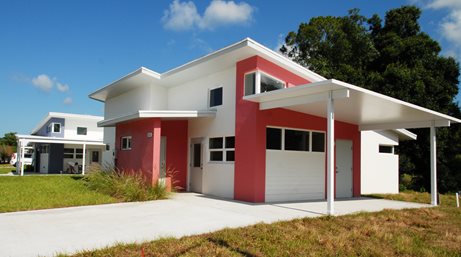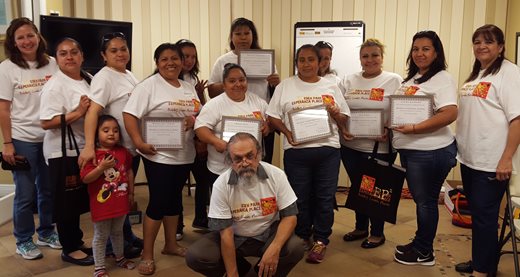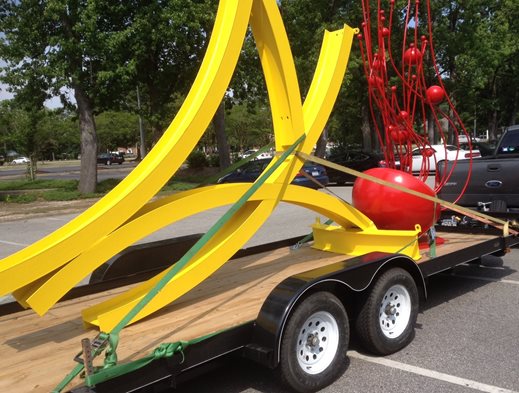Rural Neighborhoods, Inc., serves a community that topped the nation in well-being in a recent Gallup poll. Why? Because, Gallup found, beyond the white sand beaches and miles of golf courses, residents reported high rates of gainful employment, clean drinking water, a feeling of high personal energy and the ability to “learn and do interesting things daily.”
Gallup clearly did not interview Steve Kirk, executive director of NeighborWorks member Rural Neighborhoods, or the thousands of poor migrant farmworkers living in Immokalee, whose perspectives would likely change the poll results.
“The most unequal metro area in Florida — and third in the country — is Naples-Immokalee-Marco Island,” says Kirk. “The top 1 percent of our local residents earn $4.2 million a year– nearly 75 times the $57,258 average income for everyone else. In Immokalee, the average 2014 annual income was $25,725.”
|
What is well-being? |
Gallup’s well-being index scores are composed of the following metrics or essential elements of well-being: |
| Purpose | Liking what you do each day and being motivated to achieve your goals |
| Social | Having supportive relationships and love in your life |
| Financial | Managing your economic life to reduce stress and increase security |
| Community | Liking where you live, feeling safe and having pride in your community |
| Physical | Having good health and enough energy to get things done daily |
Immokalee is one of the poorest cities in Florida, with a 32 percent poverty rate. In the last year, nearly 50 percent of Immokalee’s families with children under 10 earned incomes below the poverty line.
“It must be difficult for a mansion-dweller in Naples to even imagine what life is like for a typical farmworker who makes Florida’s minimum wage of $8.22 an hour,” comments Kirk.
It is for that reason that the Southwest Florida Regional Planning Council (which covers Immokalee) was selected in July as one of the president's Promise Zones. Through the initiative, which targets high-poverty communities, federal government partners are paired with local leaders to streamline resources across agencies and deliver comprehensive support. Significant funding and other resources will be provided for 10 years.
A legacy commitment
Working families, especially migrant and seasonal farmworkers, have been the priority and focus for Rural Neighborhoods since its inception. In 1982, the Everglades Labor Camp – home to 1,800 migrant workers – faced closure due to legal and political disagreements between the local government, the growers and the workers who lived there. A broad-based coalition of national housing and civil rights groups joined with poor residents, local advocates, church leaders, bankers and growers to stop the imminent closure of the camp and ensuing homelessness of the resident migrant workers. Rural Neighborhoods was born from this movement.Today, the organization owns 1,600 rental units and 50,000 square feet of retail space, and has served more than 100,000 people.
 |
| One of the new brightly colored, single-family rental homes |
Just over two years ago, Rural Neighborhoods qualified for NeighborWorks America’s Stable Communities Catalytic Grant program, which provides funding, technical assistance, training and outcomes-assessment services to help revitalize areas struggling with foreclosures and disinvestment. Rural Neighborhoods was awarded $250,000 to create a resident-driven revitalization plan in the Eden Park and Esperanza Place neighborhoods in Immokalee.
“More than four in 10 families go home each night to a dilapidated mobile home. Unsafe structures are common. Neighbors’ cars raise clouds of dust coming in and out of the trailer park and poor drainage and standing water breed mosquitos,” adds Kirk. “Sadly, these trailers aren’t cheap; rents often exceed the standards for affordable housing, so families often double up in trailers. It’s not uncommon for parents and children to share one room with another family sharing the other room.”
Another characteristic of the area is that four in 10 residents are born outside the United States, mostly in Latin America and Haiti, and 80 percent speak a language other than English.
How to turn around a neighborhood
 |
| The new neighborhoods' first resident leadership team |
For months, the staff of Rural Neighborhoods met with low-income residents and organizational stakeholders, including local government, child care providers and Habitat for Humanity of Collier County, to get their input on improvements needed in the target neighborhoods. The suggestions they heard ranged from healthy eating and cooking classes to more sidewalks and parks. The resulting list was prioritized by residents and developed into a plan Rural Neighborhoods and its partners are using to guide future improvements in the area.
“I’d describe past resident leadership and engagement as undernourished. Engagement was often limited to having a voice in Head Start; it rarely carried over to public schools,” explains Kirk. “Our initial work to change this has been quite promising. Residents – especially young parents with children – are eager to step forward. Most are attracted to the cultural character of their neighborhood and are committed to making it a better, long-term home.”
Strong collaboration and financial support were offered by two local government entities: the Immokalee Community Redevelopment Agency (CRA) and Collier County Community and Housing Services. The final revitalization plan incorporated a series of real estate projects that included land banking idle and partially developed neighborhood parcels, acquiring and constructing 18 single-family homes, and rehabilitating and preserving 125 rental apartments.
 |
| Sculpture on the way for installation in the EP2 neighborhood |
Florida Housing Finance Corp. and Community Housing Capital are providing low-interest loans to underwrite several of these development projects and the county’s Community and Housing Services provided $700,000 in grants and forgivable loans. Immokalee local government officials also named Kirk to their affordable housing study committee.
“Fourteen million dollars in loans and grants for 18 new single-family homes, 125 preserved apartments and 25 acres of developed land is meaningful capital,” concludes Kirk. That’s a 50:1 return on investment.
Marketing a new image
Through a series of resident and stakeholder working sessions, the Eden Park-Esperanza Place “brand statement” emerged: “EP2 is a welcoming, up-and-coming neighborhood where people are hard-working and independent. It is a place replete with families and children and steeped in Latino and Haitian culture. It’s a place to find cool food, art and music.” The accompanying tag line is simpler: “people, values and culture.”The ambitious revitalization plan was then announced during the 2015 NeighborWorks Week at a kick-off event called “EP2 Music, Murals and Art.” As music blared, volunteer instructors led neighborhood children in arts activities and Columbian artist Carlos Salgado painted a mural in the neighborhood’s community center. The brand and tagline were further reinforced during this year’s NeighborWorks Week when, at the request of residents, two bright, outdoor sculptures were installed in the heart of the EP2 neighborhood. Two additional outdoor sculptures are planned in the coming year to continue to nurture neighborhood identity.
It will take time, but who knows? Perhaps, in a few years, the next Gallup poll on well-being will reflect a more inclusive view, and not only recognize in the Naples-Immokalee-Marco Island area, but feature EP2 as a welcoming, up-and-coming neighborhood where people are hard-working and independent.

